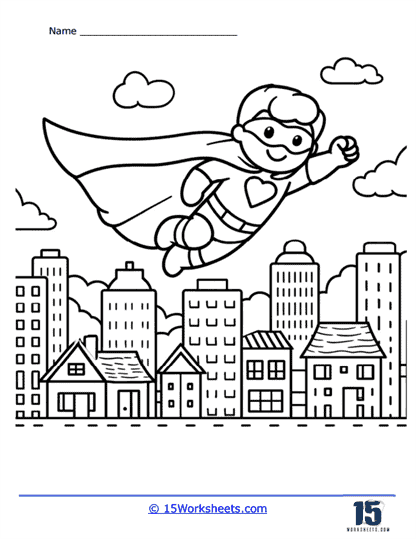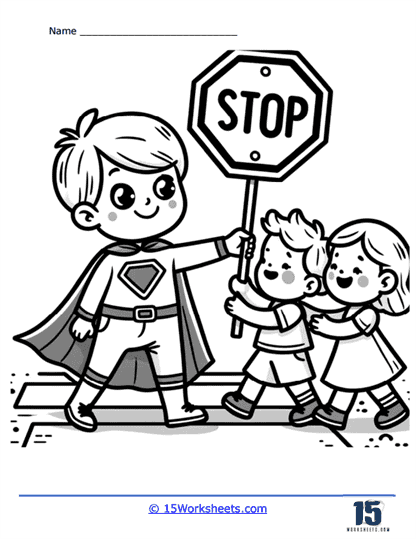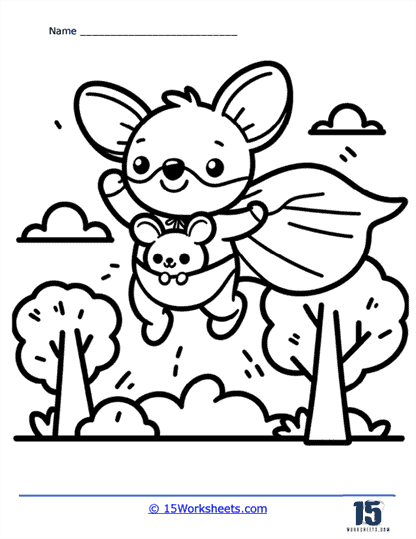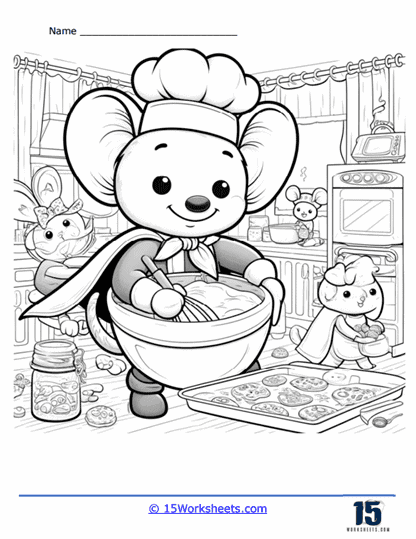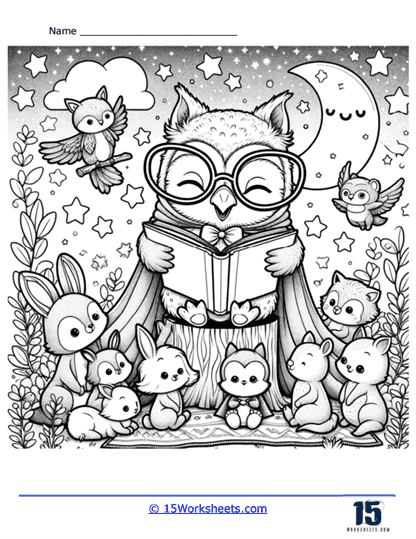Superhero Worksheets
About These 15 Worksheets
These coloring pages are a popular type of printable activity sheet that features various superhero characters and scenes designed for children to color. These pages often depict iconic superheroes from popular comic books, movies, and television shows, providing young fans with an opportunity to engage with their favorite characters in a creative and hands-on way. The designs on these coloring pages can range from simple illustrations to intricate and detailed scenes, catering to a wide age range and skill levels. This comprehensive activity not only entertains children but also offers numerous educational and developmental benefits.
They provide a fun and interactive way to connect with beloved characters while also promoting fine motor skills, hand-eye coordination, concentration, and patience. By practicing these skills through coloring, children can significantly improve their penmanship and handwriting abilities. The detailed and dynamic nature of superhero coloring pages challenges children to use their creativity and imagination, fostering a love for both art and writing. As they complete these vibrant illustrations, they gain confidence in their abilities, which translates into a more positive and enthusiastic approach to learning. Overall, superhero coloring pages are a valuable tool for combining creative expression with essential developmental skills, making them a favorite among parents, educators, and children alike.
They feature a variety of elements for children to color. The most prominent feature is, of course, the superheroes themselves. These characters are often depicted in dynamic poses that highlight their unique costumes, powers, and personalities. For instance, one might find pages featuring Superman soaring through the sky, Spider-Man swinging between skyscrapers, Wonder Woman wielding her lasso of truth, or Batman standing vigilantly on a rooftop. Each superhero’s distinct costume and accessories provide a rich tapestry of colors for children to work with, allowing them to practice color recognition and coordination.
These coloring pages include various other characters and elements from their respective universes. Villains and sidekicks frequently appear, providing additional context and storytelling elements. For example, a coloring page might feature Batman alongside Robin, facing off against the Joker. Such scenes allow children to understand relationships and dynamics within the superhero world, adding depth to their coloring experience.
The backgrounds of superhero coloring pages can also be quite diverse and detailed. These might include cityscapes with towering buildings, futuristic landscapes, natural environments like forests or mountains, and even outer space settings. These backgrounds provide ample opportunity for children to practice coloring larger areas and experimenting with different shades and techniques. Detailed scenes might include elements like vehicles (Batmobile, Invisible Jet), gadgets (web-shooters, utility belts), and iconic landmarks (the Daily Planet building, Stark Tower), all of which contribute to a rich and engaging coloring experience.
Each sheet also incorporates various action elements and special effects. For instance, one might find pages depicting bursts of energy, explosions, and dramatic motion lines that convey a sense of movement and excitement. These dynamic elements challenge children to use their imagination and creativity to bring the scenes to life. Coloring such action-packed illustrations helps children develop an understanding of visual storytelling and enhances their ability to interpret and represent motion and emotion through color.
One of the most significant educational benefits of superhero coloring pages is the improvement of penmanship and fine motor skills. Coloring within the lines of detailed illustrations requires precise hand movements and control. This practice is particularly beneficial for young children who are still developing their hand-eye coordination and dexterity. By regularly engaging in coloring activities, children can improve their ability to control their writing instruments, which translates directly to better handwriting.
The act of coloring helps to strengthen the small muscles in the hands and fingers, which are essential for writing. When children grip their crayons, colored pencils, or markers, they practice using the same muscles needed for holding and maneuvering a pencil. Over time, this repeated exercise helps to build strength and endurance, making it easier for children to write for extended periods without experiencing fatigue.
Coloring also teaches children about pressure control. When filling in different areas of a coloring page, they learn to apply varying degrees of pressure to achieve different effects. For instance, lighter pressure creates softer, lighter colors, while firmer pressure produces bolder, more vibrant hues. This understanding of pressure control is directly applicable to writing, where the ability to adjust the pressure of a pencil affects the clarity and neatness of handwriting.
Coloring within the lines requires a significant amount of focus and concentration. Children must pay close attention to the boundaries of each section and carefully guide their coloring tool to stay within those limits. This level of attention to detail helps to improve their overall concentration and patience, skills that are crucial for successful writing. As they become more adept at coloring within the lines, they simultaneously develop better control over their handwriting movements, leading to more precise and legible penmanship.
These sheets feature a variety of intricate details and small spaces that require careful coloring. Engaging with these detailed illustrations helps children refine their fine motor skills by encouraging them to make smaller, more controlled movements with their hands. This precision is directly transferable to writing, where forming letters and numbers requires the same kind of meticulous attention to detail.
Another benefit is that they provide a sense of accomplishment and boost confidence. Completing a detailed and vibrant coloring page gives children a tangible sense of achievement, reinforcing their belief in their abilities. This confidence can translate into their writing activities, where they feel more assured in their skills and more willing to take on challenging tasks. The positive reinforcement gained from successfully finishing a coloring page encourages children to tackle other fine motor tasks, including writing, with increased confidence and enthusiasm.
These sheets can also serve as a springboard for other creative activities that also benefit penmanship. For example, after coloring a superhero scene, children might be inspired to write a story or a description about the characters and actions depicted. This kind of writing activity not only reinforces their narrative skills but also provides additional practice in forming letters and sentences. By combining coloring with writing, children can seamlessly transition from one skill-building activity to another, enhancing their overall language arts development.
These types of pages also encourage children to practice consistency and repetition, which are key components of good penmanship. The repetitive motion of coloring similar shapes and patterns helps to reinforce muscle memory, making it easier for children to replicate the same motions when writing. This consistency in movement is essential for producing uniform and legible handwriting. As children become more practiced at coloring, they develop a smoother and more consistent hand motion, which translates to improved writing skills.
The engaging and familiar themes of superhero coloring pages make the practice of developing fine motor skills and penmanship more enjoyable. Children are more likely to engage in activities that feature their favorite superheroes, making the learning process feel less like a chore and more like an exciting adventure. This positive association with learning encourages children to spend more time coloring, further enhancing their fine motor development and handwriting skills.
These types of activities provide an opportunity for children to explore and experiment with different art tools, each of which can help improve penmanship in different ways. For instance, using crayons might require a different grip and pressure compared to using colored pencils or markers. By experimenting with various tools, children learn to adapt their hand movements and pressure control, gaining a broader range of fine motor skills that are beneficial for writing. This versatility in using different tools helps to create a well-rounded and adaptable approach to handwriting.









